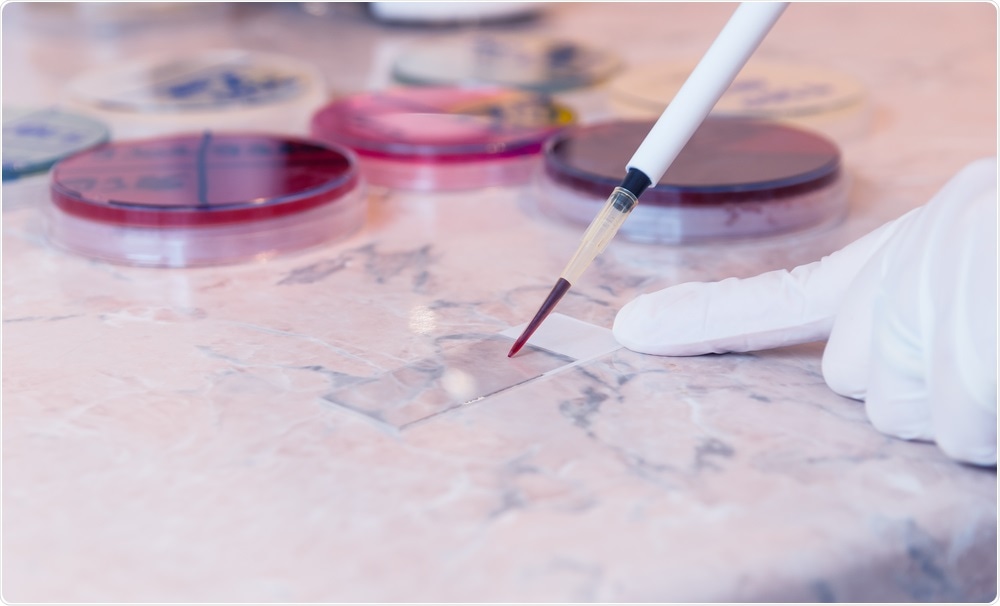Researchers at the National Institutes of Health (NIH) have developed a unique, improved viral vector to use in gene therapy for sickle cell disease.
Using animal models, the new vector was shown to support the transfer of corrective genes into bone marrow stem cells up to ten times more efficiently than current vectors. It also had a carrying capacity that was ten times greater than conventional vectors.
The new vector could be a much more effective way of treating the painful, life-threatening blood disorder, which affects about 100,000 individuals in the US and millions of people worldwide.
The study, which was published online yesterday in the journal Nature Communications, was supported by the National Heart, Lung, and Blood Institute and the National Institute of Diabetes and Digestive and Kidney Diseases, both part of the National Institutes of Health.
 Zaharia Bogdan Rares | Shutterstock
Zaharia Bogdan Rares | Shutterstock
Sickle cell disease is an inherited blood disorder caused by a mutation in the beta-globin gene that results in hemoglobin having an abnormal structure. This structure yields red blood cells that are sickle-shaped rather than disc-shaped, which causes them to stick to blood vessel walls, causing blockage, pain, anemia, organ damage, and premature death.
Our new vector is an important breakthrough in the field of gene therapy for sickle cell disease. It’s the new kid on the block and represents a substantial improvement in our ability to produce high capacity, high-efficiency vectors for treating this devastating disorder.”
John Tisdale, Senior Investigator, NIH
In gene therapy approaches, researchers use viral vectors to deliver therapeutic genes into host bone marrow stem cells that are introduced back into the patient’s body.
The vector is modified to carry corrective genes that will have therapeutic effects, often by counteracting a genetic mutation. However, there is always room for improvement in terms of design and effectiveness, says Tisdale. As well as being more effective, the new vector is also much easier and cheaper to produce.
Reverse structural orientation
For the last three decades, researchers have been designing these vectors in a reverse structural orientation, which means the corrective genes that are introduced into the vector are translated from right to left (or backwards).
This reverse orientation is needed due to the sensitive expression of a genetic segment in the vector called intron 2. This molecular component is required for high-level beta-globin gene expression, but if it is left-oriented in the natural, left-to-right (forwards) direction, it gets excluded during the usual vector preparation process.
Gene therapy approaches that use these reverse-oriented vectors for sickle cell disease have so far been encouraging, but Tisdale and team say this gene translation process has made vector preparation and the efficiency of gene transfer more challenging.
Redesigning the vector
About ten years ago, Tisdale and colleagues started working on ways to improve the beta-globin delivery vehicle. Now, they have managed to redesign the vector so that intron 2 is left intact and translated in the forward direction.
This has simplified the gene translation process and when the new vector was tested in mice and monkeys, it delivered up to six times more therapeutic beta-globin genes than conventional vectors.
It also had a ten-times greater transduction efficiency, which is a measure of the vector’s ability to incorporate the corrective genes into the bone marrow cells.
Our lab has been working on improving beta-globin vectors for almost a decade…and finally decided to try something radically different—and it worked. These findings bring us closer to a curative gene therapy approach for hemoglobin disorders.”
John Tisdale, Senior Investigator, NIH
The new vector also demonstrated longevity, remaining in place for a whole four years after transplantation.
Furthermore, the researchers found the new vector could be produced in much greater quantities than the conventional vector, potentially cutting costs and saving time in large-scale industrial production.
“In this report, we describe a forward-oriented globin-expressing vector that retains intron 2, achieves high vector titers, and results in efficient transduction of human HSCs in vitro and in xenograft mice and rhesus HSCs in vivo,” writes the team.
Next steps
Next, the NIH-patented vector will need to be tested in clinical trials. An estimated 27 sickle-cell patients have already undergone experimental gene therapy that uses conventional vectors.
The NIH is working to expedite the development of gene therapies, including gene editing, through its Cure Sickle Cell Initiative, which is part of the organization’s larger, multi-pronged approach to reducing the burden of blood disorders.
People with sickle cell disease who are interested in participating in a trial can find ones that are currently enrolling by visiting clinicaltrials.gov.
Source:
Journal reference:
Uchida, N. et al. (2019) Development of a forward-oriented therapeutic lentiviral vector for hemoglobin disorders. Nature Communications. doi.org/10.1038/s41467-019-12456-3